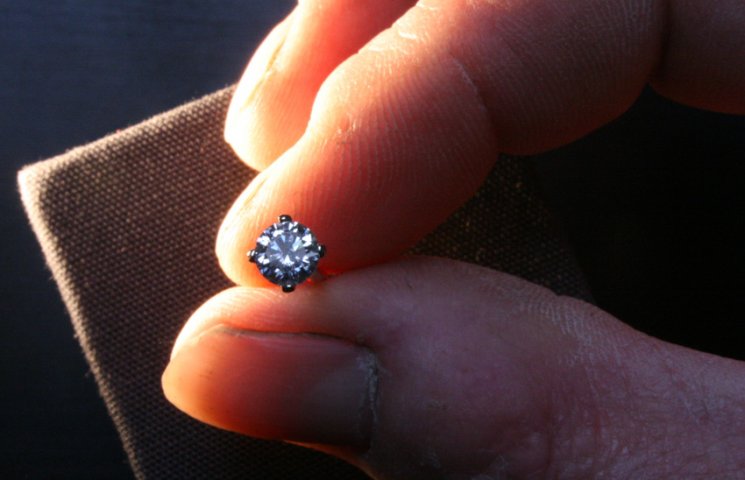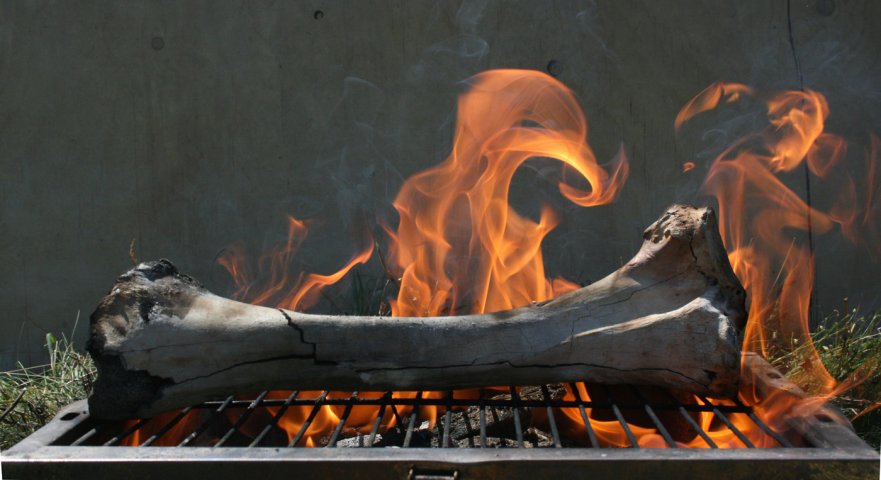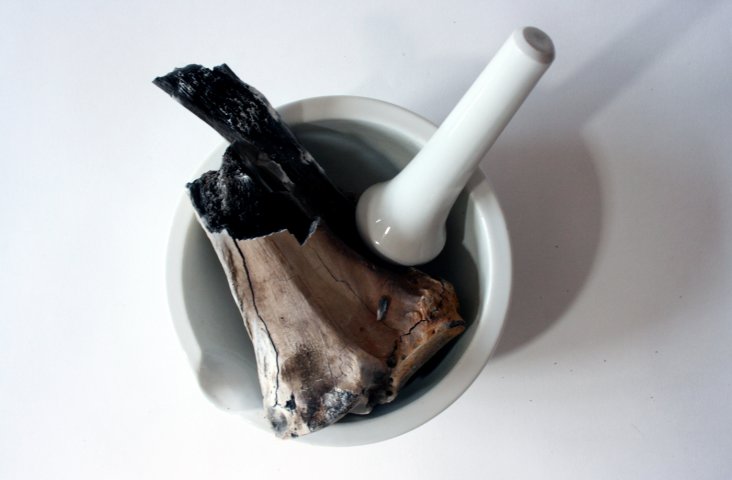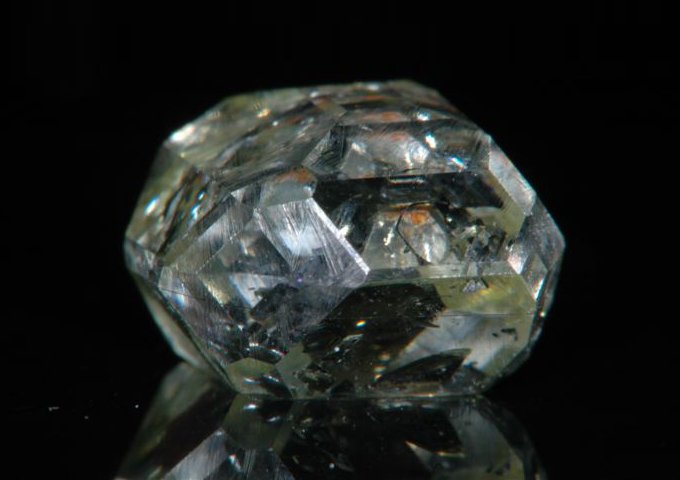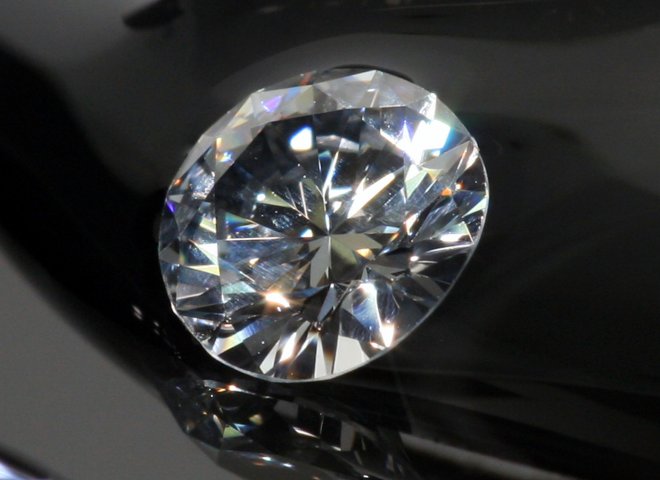Polar Diamond was realised with the support of the Royal Academy of Arts, London.
Toured with Cape Farewell’s Unfold exhibition, exhibited at John Moores University, Liverpool, 8 March – 26 April 2012, Manmade, Raversyde, Belgium 2016, David Attenborough Building Cambridge, 2016.
Diamond: 5.34 – 5.37 by 3.20mm
The landscape of the High Arctic is almost bereft of trees, a place of ice and glaciers that is subject to unprecedented levels of warming and is often referred to as the canary in the coal mine of the climate crisis. Our work Polar Diamond was born out of an expedition to the Svalbard Arctic Archipelago, 2004. The Environmental Manager at Svalbard showed us the leg bone of a polar bear that was kept in the building she worked in. When the necessary permissions were granted, we had the bone sent to us in the United Kingdom and we subsequently reduced it to carbon graphite in a cremation process. Using technology to accelerate a process that usually occurs naturally over millions of years, a diamond has been grown from the residue. The hardest substance found in nature, diamonds are composed of atoms of carbon, a chemical element that originated from the stars. Now, the cumulative carbon emissions from the burning of fossil fuels jeopardise many of the Earth’s fragile ecosystems, including that of the Arctic.
In 2008 overwhelming scientific evidence of dwindling sea ice in the region and all scientific models showing that the rapid loss of ice will continue were key to the decision to place polar bears under the protection of the Endangered Species Act.
Polar Diamond carries an implicit pathos, an anticipation of loss, and the knowledge that rarity inevitably increases value. It poses the question, what price is paid for carbon?

